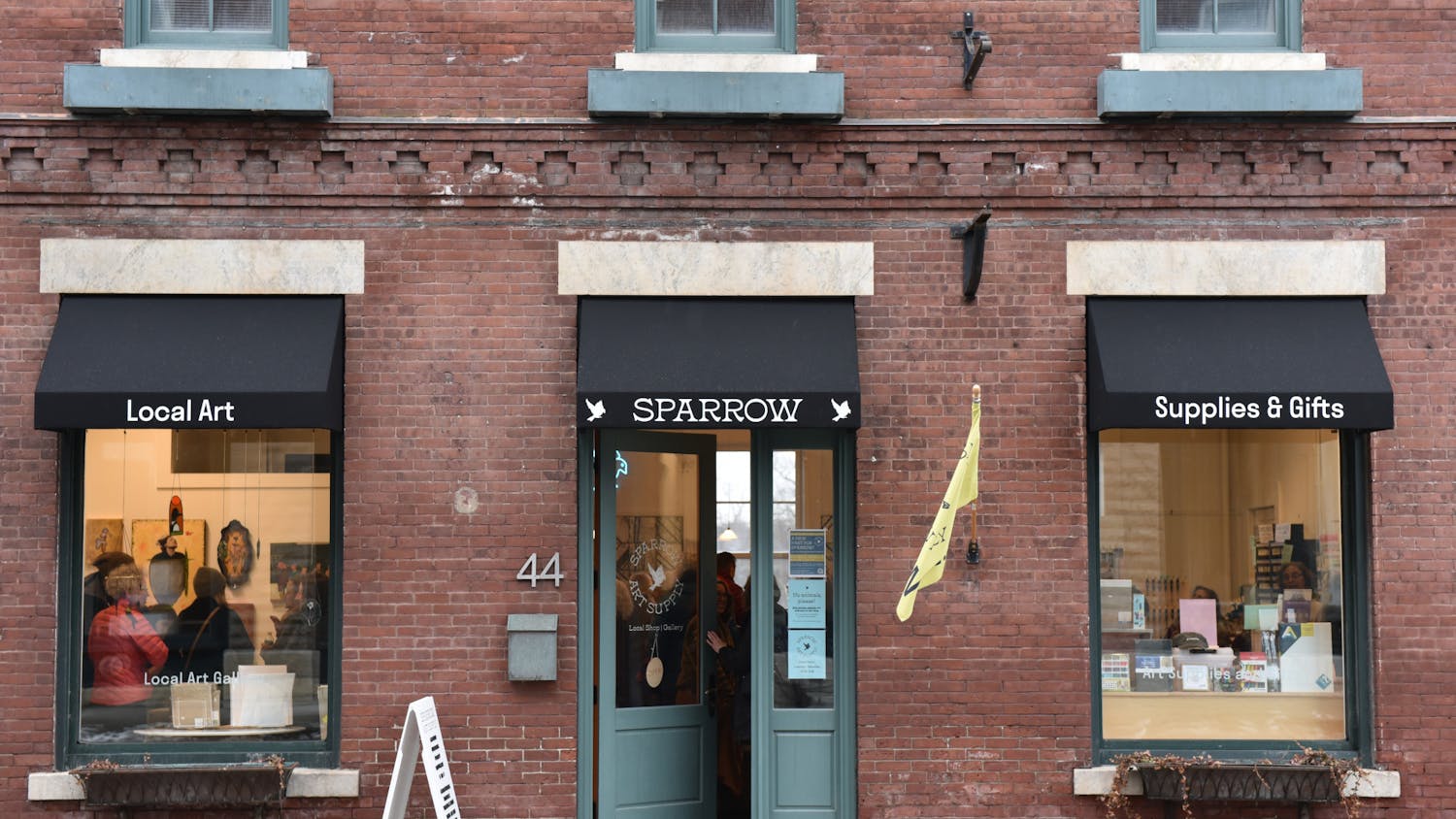Cameron Visiting Artist Jake Winiski gave a lecture titled “How an Artist Becomes A Biologist” last Tuesday, Feb, 25. In his talk Winiski detailed an unordinary life spent in pursuit of the fantastic in both his capacity as an artist and a scientist.
Winiski is a research biologist for the company Ecovative and he presented their efforts to build biodegradable materials from fungi and their vision of a world rid of Styrofoam and other environmentally disastrous industrial materials. He also exhibited his strange yet wonderful art that revolves around a self-constructed miniature world.
Winiski began the lecture showcasing and explaining his work as an artist. All his work is based off a miniature world he first created in 2009, when he “started building this room-size model with junk: cardboard, paint, tape, etc.”
The image he showed us of his entire world looked chaotic and colorful, a jumble of oddball materials seemingly randomly placed. The model he has now contains the same materials he first put into it in 2009.
“It has gone through constant breaking down and reconstruction,” Winiski said. “I’ll rip it apart and rebuild it. In the end it needs to be a stand-alone world that is governed by similar rules than this world. So when materials go into this world, they don’t come out.”
Winiski takes up-close photos of different areas of his models and later paints them. His images are a 50:50 hybrid of photography and painting. Often he paints in faces to create what he calls the hopeful monster.
“Over the years, as I’ve taken on a more biological perspective from my second life, I’ve become really fascinated by the idea of the hopeful monster,” he said. “Evolution is not always a slow gradual process but sometimes manifests itself as a dramatic mutation. And that gives a portion of the population this mutation, and it’s essentially a monster. That mutation either gives a benefit to the organism, which allows it to out-compete the rest of the population, and it essentially becomes normal, or it fails and it’s bred out of the larger population. What I’m trying to do with these images is create an entire world full of hopeful monsters. “
The idea for the model was catalyzed by his interest in crypozoological photography, or photos of supposed mythical creatures such as big foot and the lochness monster.
“Cryptozoological photography is a beautiful indication of how the human myth-building impulse has been transferred to the modern age and our current technology,” Winiski said. “The simplicity of interjecting into a photograph, circling a blurry image, and proposing the possibility of some amazing humanoid creature was fascinating. But instead of going out into the world to find sasquatches I started building my own worlds, and I would look for Sasquatches inside it.”
The second part of Winiski’s lecture described his work for the company Ecovative. Ecovative is a recent material science start-up that seeks to build biodegradable materials from agricultural waste to replace the energy intensive and non-degradable materials often used in packaging such as Styrofoam blocks.
To build materials they use the properties of fungus and specifically their hyphae, or their root-like structures that bury underground. They take agricultural waste, such as corns husks or oat hulls, and place them into a template that shapes them into the desired material like a packaging brick around a television. They add fungus and their hyphae spread around the material and hold it together like glue. The hyphae then digest and convert the feed-stock into a stronger material called chitinous polymer. They heat and dry the material to inactivate the fungus. At the end of the process they have a strong material of chitin and dead hyphae that can be used as packaging material.
Winiski hopes that this material will start to be used in place of synthetic industrial materials such as Styrofoam.
“When you get a TV or most any other product by mail it comes with Styrofoam corner blocks and you immediately chuck them out. But one cubic foot of this material takes the amount of energy given off by burning a liter and a half of petrol,” he said. “Furthermore, that Styrofoam is going to sit around in a landfill for tens of thousands of years. Styrofoam accounts for more than a third of the mass of landfills, and most of that is coming from products that are ephemeral, that were packaged in a TV, shipped and was only used for two weeks. We’re trying to build materials that reduce the amount of input energy by half and can be used for their three or four week cycle and then can be tossed out in the garden because they’re gonna decompose.”
Winiski only recently started working for Ecovative. He had worked a variety of jobs to support his artistic endeavors, and stumbled into his job as a research biologist.
“Over the last few years, mostly by accident, but with a little bit of luck, I backed my way into working as a research biologist,” he said. “My only formal training is in the arts. I think I took one biology class as an undergrad. I essentially knew nothing before coming. I learned on my feet through observation.”
Winiski works in product design. He explained how each species has their own unique properties and uses, and he explores how new species can be incorporated into the production process.
“What I do is essentially just play, something that many biologists understand,” Winiski said. “I try new materials, observe how they work, how it feels, how it resists being cut and what it does when it’s growing.”
Winiski ended by challenging the distinction between artist and scientist. He posited that they both require a similar way of thinking, and said skills crossed over between his two professions.
“I leveraged non-linear explorative, creative experiences and applied that to research and developed of biomaterials for Ecovative,” he said.
Lecturer Links Biology and Art
Comments



